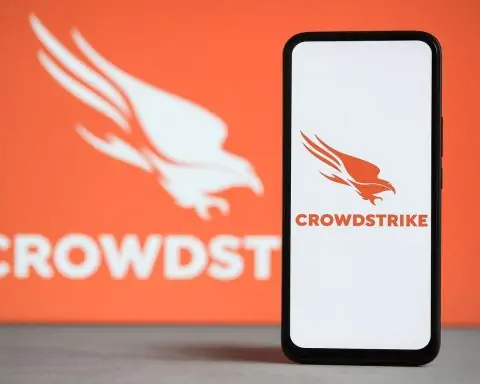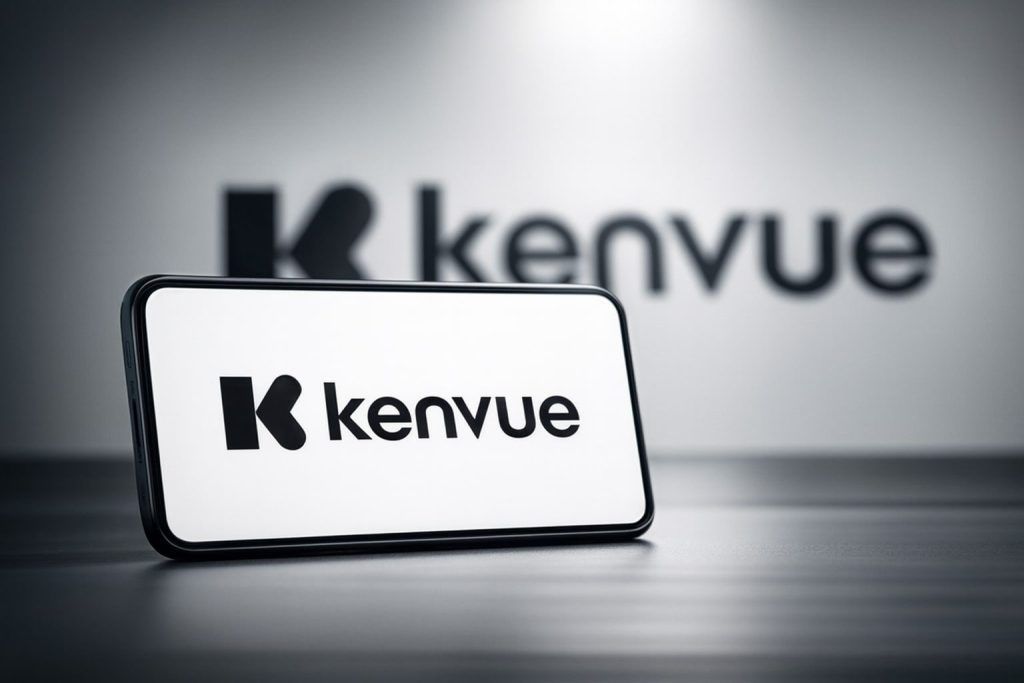The Walt Disney Company (NYSE: DIS) heads into the weekend trading just above $104 per share, still digesting a volatile post‑earnings week while fresh institutional filings, new theme‑park pricing plans, and high‑profile brand tie‑ins dominate today’s Disney headlines.
Below is a full rundown of Disney stock today (22 November 2025) — price, performance, and every notable piece of news hitting the tape.
Disney stock price snapshot for November 22, 2025
U.S. markets are closed today (Saturday), so the latest actionable numbers for Disney come from Friday’s session and subsequent after‑hours trading:
- Last close (Fri, Nov 21, 2025): about $104.28 per share, up roughly 1.5% on the day. [1]
- After-hours indication: Disney shares most recently changed hands around $104.2 in late trading, essentially flat versus the close. [2]
- 52‑week range:
- High: $124.69 on June 30, 2025
- Low: $80.10 on April 7, 2025
- At $104.28, the stock trades about 16–17% below its 52‑week high and roughly 30% above its low. [3]
- Performance: Over roughly
- 1 week: down about 3%,
- 1 month: down about 8–9%,
- 1 year: down around 9–10%,
- 5 years: still showing a loss in the mid‑20% range. [4]
At a market capitalization around $185–186 billion and a trailing P/E near 16x earnings, Disney is priced more like a mature blue chip than a hyper‑growth media/tech story — a point that underpins much of today’s analyst commentary. [5]
The backdrop: mixed Q4 FY25 results and a sharp post‑earnings sell‑off
Disney’s current trading range is still shaped by the company’s fiscal Q4 2025 earnings report, released on November 13.
Headline numbers
For the quarter ended September 27, 2025, Disney reported: [6]
- Revenue: $22.46 billion — essentially flat year over year and slightly below Wall Street estimates in the $22.7–22.9 billion range.
- Adjusted EPS:$1.11, beating consensus of roughly $1.03 and up strongly versus last year’s adjusted profit.
- Full‑year revenue: about $94.4 billion, up roughly 3% from fiscal 2024.
- Income before income taxes: more than doubled year‑over‑year for the quarter, reflecting margin improvement and lower restructuring costs.
Segment‑level pictures were more nuanced:
- Entertainment (film, TV and streaming) revenue fell about 6% year‑over‑year in Q4, with tough comparisons in theatrical releases and continued weakness in traditional TV. [7]
- Experiences (theme parks, cruises and consumer products) remained the star, with Q4 revenue up about 6% and record segment operating income of roughly $1.9 billion; full‑year operating income for Experiences hit around $10 billion, another record. [8]
- Direct‑to‑consumer (streaming), including Disney+, Hulu and ESPN+, grew revenue about 8% and delivered hundreds of millions of dollars in operating income, versus loss‑making levels just a few years ago — meaning streaming is now a consistent profit contributor rather than a cash drain. [9]
External coverage from outlets like AP and Investopedia largely framed the quarter as “profits beat, revenue miss”: streaming and parks are doing the heavy lifting, while linear TV and parts of the film slate continue to drag. [10]
Market reaction
Investors focused on three pain points:
- Revenue softness despite strong parks and profitable streaming.
- Ongoing weakness in linear TV, where advertising and affiliate revenue remain under pressure. [11]
- Distribution risk tied to a blackout of Disney’s networks on YouTube TV at the time of the release.
The result: shares dropped nearly 8% on November 13 on very heavy volume, one of the stock’s sharpest single‑day declines of 2025. [12]
YouTube TV dispute… and fast resolution
Initially, management warned that a carriage dispute with YouTube TV — which had left Disney networks like ESPN and ABC dark for about two weeks — could be prolonged and was factored into revenue outlooks. [13]
But just one day later, on November 14, Disney announced a multi‑year distribution agreement with YouTube TV, restoring its full suite of networks and local stations to the service and removing a meaningful short‑term overhang on affiliate revenues. [14]
So the market today is still digesting:
- Stronger EPS and free‑cash‑flow guidance into 2026–2027,
- The reality of slower top‑line growth,
- And relief that a potentially costly YouTube TV blackout is already resolved.
Today’s big Disney stock news: institutional investors shuffle their positions
Much of the company‑specific news dated November 22, 2025 revolves around fresh 13F filings and institutional ownership shifts. Several MarketBeat “instant alerts” on Disney were published today summarizing those regulatory filings. [15]
Institutions adding to Disney
Key buyers reported today include:
- Mufg Securities Americas Inc.
- Increased its Disney stake by about 24.5% in Q2.
- Now holds 39,843 shares, valued near $4.9 million at the time of filing. [16]
- Evelyn Partners Investment Management Services Ltd
- Boosted its Disney position by an eye‑catching 4,998.5% in Q2, taking holdings to 195,682 shares (~$22.8 million).
- Disney now represents roughly 2.3% of this portfolio and is its 10th‑largest position. [17]
- Evelyn Partners Investment Management LLP
- Increased its stake by 37,930.6% to 92,034 shares, worth about $11.4 million at the time of the filing. [18]
- Stevens Capital Management LP
- Lifted its position by 222%, buying 12,988 additional shares to reach 18,838 shares, valued around $2.34 million. [19]
Collectively, these updates support an ongoing theme: multiple hedge funds and asset managers have been building Disney positions into mid‑2025, even as the stock has struggled relative to the broader market.
Institutions trimming or rebalancing
Not every big holder is adding:
- Prudential PLC reduced its stake by about 27.8% in Q2, selling nearly 20,000 shares and ending the period with 51,696 shares (roughly $6.4 million). [20]
- Rhumbline Advisers, a large index‑style manager, trimmed its position by around 2.4% but still holds a sizable 3.2 million shares, worth approximately $397 million and representing about 0.18% of Disney’s outstanding stock. [21]
MarketBeat’s aggregated figures suggest that roughly two‑thirds of Disney’s shares (about 65–66%) are held by institutions and hedge funds, underlining the stock’s status as a core large‑cap holding in many portfolios. [22]
“Entertainment stocks to watch” list
A separate MarketBeat screen published today highlights Disney among seven “entertainment stocks worth watching”, alongside names like Verizon, Sea, Roblox, Warner Bros. Discovery, VICI Properties and DraftKings. The piece frames “entertainment stocks” broadly as companies monetizing content and experiences — from streaming and games to live events and theme parks — with Disney squarely at the center. [23]
For investors, the takeaway from today’s institutional headlines is less about any single fund and more about continued active interest in Disney from professional money managers, with overall ownership remaining concentrated but dynamic.
Theme-park news today: dynamic ticket pricing coming in 2026
One of the most widely shared Disney stories today (Nov. 22) comes from Parade, under the headline “Disney Announces Major Update That Could Change How Park Tickets Work.” [24]
According to that report and related coverage:
- Disney plans to roll out a more aggressive dynamic pricing system for its U.S. parks starting in 2026.
- Ticket prices will vary more flexibly based on expected demand — think airline‑style or hotel‑style pricing, where low‑season days are cheaper and peak holidays can be significantly more expensive. [25]
- The article focuses heavily on how families can “outsmart” higher‑priced days by choosing off‑peak dates and watching for promotions.
From a stock and earnings perspective, this matters because:
- Disney’s Experiences segment (parks, resorts and cruises) is already a major profit engine, and
- Dynamic pricing, if implemented smartly, tends to raise average per‑guest revenue without necessarily increasing fixed costs.
Investors have seen similar strategies at other travel and leisure companies yield:
- Higher revenue per available “seat” or “room” equivalent,
- Better ability to smooth demand across the calendar, and
- A tool to protect margins during inflationary periods.
At the same time, more aggressive pricing carries reputational risk if guests feel squeezed — something commentators and former cast members have already criticized in earlier price‑hike cycles this year. [26]
Net‑net, today’s ticketing story is a reminder that management is still leaning hard on the parks to drive earnings growth, complementing the streaming turnaround.
Brand-building today: Disney + Formula 1 at the Las Vegas Grand Prix
Another timely storyline for November 22 is Disney’s high‑profile “Fuel the Magic” collaboration with Formula 1 at the Las Vegas Grand Prix. [27]
Key points from the campaign:
- The collaboration officially kicks off around this weekend’s 2025 Las Vegas GP, with coverage in the U.S. on ESPN and the ESPN app on November 22, 2025. [28]
- Disney characters including Mickey & Friends are appearing in live performances at the Fountains of Bellagio, grid events and a community day in Las Vegas. [29]
- A Disney x Formula 1 merchandise capsule collection launched earlier this month, sold both on‑site at the F1 Las Vegas Hub in the Venetian and online via DisneyStore.com. [30]
- The campaign is slated to run through the 2026 and 2027 F1 seasons, providing multi‑year global brand exposure alongside one of the world’s fastest‑growing sports. [31]
Financially, this is more of a brand and merchandising play than a direct earnings driver, but it reinforces Disney’s strategy of:
- Turning ESPN into a premium live‑sports gateway,
- Extending character IP into new lifestyle products,
- And deepening the Experiences segment through event‑driven tourism and fandom.
For shareholders, it’s part of the broader thesis that Disney’s IP can travel far beyond movie screens and park gates.
Overnight incident at Disney World: a safety scare, limited stock impact
Two separate fan‑site reports today — from Disney Dining and Inside the Magic — describe an early‑morning police response at Walt Disney World on November 22. [32]
According to those reports:
- Police were called to Disney’s Pop Century Resort in the early hours (around 2:30 a.m.) after a missing‑person report on property. [33]
- A local account on X (formerly Twitter) tracking police activity near Disney later showed the incident being reclassified from “missing person” to a “citizen assist / check well‑being” call, suggesting a routine welfare check rather than an ongoing emergency. [34]
- Coverage emphasizes that the situation appears to have been resolved quickly, with no continuing threat reported to guests.
From a stock perspective, events like this are headline‑worthy but not usually price‑moving unless they point to systemic safety or reputational issues. So far, this looks like a limited, localized incident in the context of a vast resort operation.
Governance & leadership: CFO contract extended into 2029
Another recent corporate development still relevant to investors today:
- On November 12, 2025, Disney extended the employment agreement of CFO Hugh F. Johnston through January 31, 2029. [35]
- His target long‑term equity incentive award was raised to about $16.5 million per year, with no changes to base salary or target annual bonus. [36]
The filing emphasizes continuity in the finance function as Disney executes on:
- Streaming profitability targets,
- A sizable $7 billion share buyback plan for 2026,
- And guidance for double‑digit EPS growth through at least 2027, reiterated in earnings commentary and at recent investor events. [37]
For shareholders, the move signals the board’s confidence in Johnston’s role in the turnaround strategy that CEO Bob Iger has laid out.
How Wall Street and valuation models see Disney stock right now
With Disney now back in the low‑$100s, a key question dominating today’s coverage is whether the post‑earnings pullback has created value.
Analyst ratings and price targets
Across major analyst surveys:
- Data compiled by MarketBeat shows 18 Buy ratings, 8 Hold ratings and 1 Sell, for an overall “Moderate Buy” consensus and an average price target around $134.41. [38]
- At Friday’s close near $104.28, that average target implies roughly 29% upside.
- A separate forecast set tracked by TradingView shows analyst targets ranging from about $77 on the low end to $160 on the high end. [39]
- StockAnalysis currently categorizes Disney as a “Strong Buy” based on its subset of covering analysts, reflecting a tilt toward positive ratings after the earnings reset. [40]
Individual firms have tweaked numbers over the past week:
- Wells Fargo, for example, recently trimmed its target from $159 to $152 while keeping an “Overweight” rating, citing broad market dynamics rather than a fundamental thesis change. [41]
- Other houses like Evercore ISI and Needham maintained outperform / buy views while adjusting their targets around the mid‑$120s to low‑$140s after earnings. [42]
Fair‑value and intrinsic value models
Beyond Wall Street strategists, valuation tools are giving a mixed but generally constructive view:
- GuruFocus’ GF Value model pegs Disney’s fair value at about $109.59 per share as of today, versus the actual price of $104.28 — labeling the stock “Fairly Valued” but modestly discounted (Price/GF Value ≈ 0.95). [43]
- ValueInvesting.io’s relative P/E‑based model is far more bullish, suggesting a “fair” price around $275 per share, implying over 160% upside based on historical multiples of comparable media names. [44]
Those models use different assumptions:
- GF Value is fairly conservative and highly tied to Disney’s historical relationship between fundamentals and price.
- The P/E‑multiples approach effectively assumes Disney will be re‑rated toward richer valuation levels seen in the past or among peers.
Investors should treat these as reference points, not guarantees, but together they underpin the argument that Disney doesn’t look expensive by its own history or by large‑cap media standards — especially if management delivers on its EPS growth promises.
Media and research commentary
Several recent pieces — some of which are being widely recirculated today — highlight Disney’s long‑term underperformance and potential for a catch‑up:
- A Motley Fool article syndicated on Nasdaq notes that Disney shares have lagged the S&P 500 over 1, 3 and 5 years, blaming trade tensions, a weak theatrical slate in 2025, and the now‑resolved YouTube TV dispute, while arguing that the stock trades at less than 16x this year’s earnings and under 14x next year’s estimates. [45]
- A GoBankingRates analysis, resurfacing on AOL today, makes a similar point: Disney stock is up this year but still trails the S&P 500, with the key question being whether double‑digit EPS growth can finally close that gap. [46]
- Zacks Investment Research has also recently highlighted Disney in its screen of “strong value” stocks, pointing to valuation metrics that look attractive versus peers and history despite the company’s cyclical challenges. [47]
Overall, today’s sentiment skews toward: “fundamentals improving, valuation reasonable, but execution still needs to prove itself.”
Key risks and catalysts Disney investors are watching
Pulling together this week’s and today’s news, here are the main issues markets are likely focused on right now:
1. Execution on streaming profitability and subscriber growth
Streaming is now profitable and subscriber counts are rising again, but the business is still highly competitive and capital intensive. The path to sustained, high‑margin streaming profits is central to most bullish models. [48]
2. Dependence on parks & Experiences
With Experiences delivering record operating income, Disney is leaning heavily on parks, cruises and consumer products to offset weaker linear TV and cyclical box office performance. Dynamic pricing and event partnerships (like F1) could boost this further — but also increase sensitivity to economic slowdowns and consumer pushback on prices. [49]
3. Traditional TV and advertising headwinds
Cable networks and ABC remain meaningful profit contributors but are structurally challenged by cord‑cutting and ad‑market shifts. Even with the YouTube TV dispute resolved, investors will be watching whether linear declines stabilize or continue to erode segment margins. [50]
4. Capital allocation: dividends and buybacks
Disney has committed to doubling buybacks to about $7 billion in fiscal 2026 and raising its dividend by 50% to $1.50 per share, signaling confidence in cash flows — but those plans rely on hitting EPS and free‑cash‑flow targets. [51]
5. Macro and political risk
Trade tensions, travel trends and political ad cycles all ripple through Disney’s theme‑park, advertising and studio businesses. Management itself has cited weaker political ad spending as one reason revenue disappointed in Q4, reminding investors how macro factors can suddenly hit results. [52]
Bottom line on Disney stock today, November 22, 2025
Putting it all together:
- Price: Disney ends the week around $104 per share, closer to its 52‑week midpoint than its highs. [53]
- Fundamentals: Q4 showed solid EPS growth and strong parks and streaming, offset by soft revenue and linear‑TV declines. [54]
- News today:
- Multiple institutional investors have disclosed sizable increases in their DIS positions, with a few trimming or rebalancing. [55]
- Disney is preparing a dynamic ticket‑pricing overhaul for U.S. parks in 2026 — potentially good for per‑guest revenue, but a flashpoint for consumer sentiment. [56]
- The “Fuel the Magic” F1 collaboration and a minor overnight safety scare at Disney World round out today’s headlines, with limited immediate earnings impact but relevance for brand perception. [57]
- Valuation & opinion: Consensus analyst targets suggest high‑20s percent upside from current levels, and several valuation models see the shares as at least fairly priced, if not outright undervalued, provided management hits its double‑digit EPS growth goals through 2027. [58]
Whether that makes Disney stock a buy, hold or avoid ultimately depends on your risk tolerance, time horizon, and view on:
- The durability of the parks boom,
- The long‑term economics of streaming, and
- Management’s ability to navigate structural decline in traditional TV.
This article is informational only and not personalized investment advice. If you’re considering trading DIS, it’s worth pairing today’s news with your own financial plan or a conversation with a qualified adviser.
References
1. www.investing.com, 2. public.com, 3. www.indmoney.com, 4. www.tradingview.com, 5. www.marketbeat.com, 6. thewaltdisneycompany.com, 7. licensinginternational.org, 8. thewaltdisneycompany.com, 9. thewaltdisneycompany.com, 10. apnews.com, 11. apnews.com, 12. www.investing.com, 13. www.reuters.com, 14. thewaltdisneycompany.com, 15. www.marketbeat.com, 16. www.marketbeat.com, 17. www.marketbeat.com, 18. www.marketbeat.com, 19. www.marketbeat.com, 20. www.marketbeat.com, 21. www.marketbeat.com, 22. www.marketbeat.com, 23. www.marketbeat.com, 24. parade.com, 25. parade.com, 26. www.aol.com, 27. www.stocktitan.net, 28. www.stocktitan.net, 29. www.stocktitan.net, 30. www.stocktitan.net, 31. www.stocktitan.net, 32. www.disneydining.com, 33. insidethemagic.net, 34. insidethemagic.net, 35. www.investing.com, 36. www.investing.com, 37. www.investing.com, 38. www.marketbeat.com, 39. www.tradingview.com, 40. stockanalysis.com, 41. www.gurufocus.com, 42. stockanalysis.com, 43. www.gurufocus.com, 44. valueinvesting.io, 45. www.nasdaq.com, 46. finance.yahoo.com, 47. www.zacks.com, 48. thewaltdisneycompany.com, 49. thewaltdisneycompany.com, 50. www.investopedia.com, 51. apnews.com, 52. coincentral.com, 53. www.indmoney.com, 54. thewaltdisneycompany.com, 55. www.marketbeat.com, 56. parade.com, 57. www.stocktitan.net, 58. www.marketbeat.com







